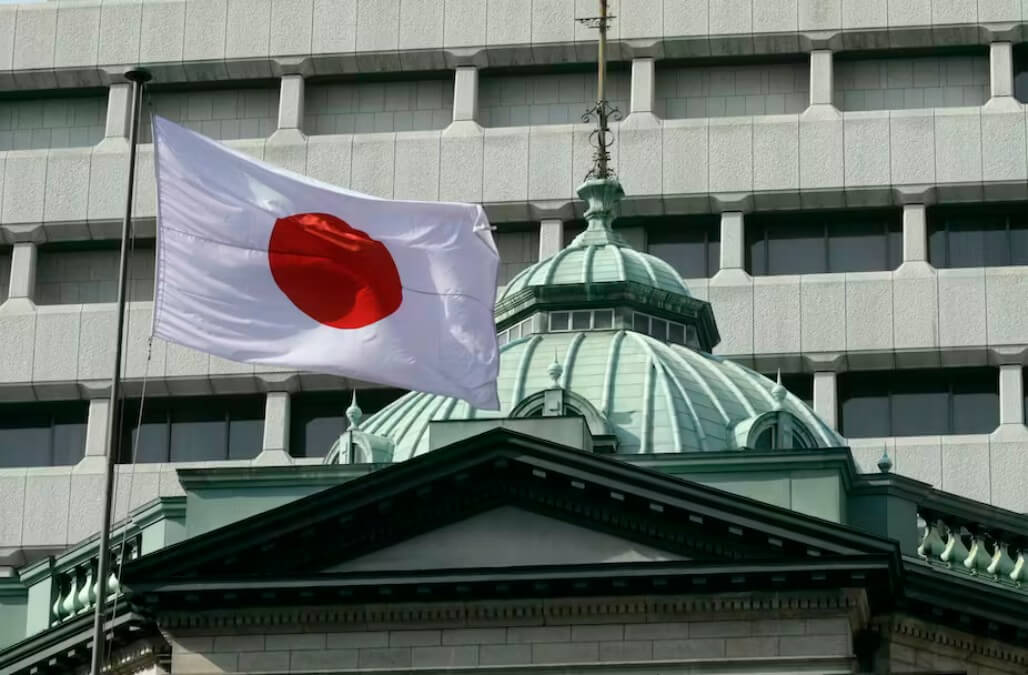Japan’s inflation is “clearly in sight” with the central bank’s target, board member Naoki Tamura has highlighted, which suggests a potential discontinuation of negative interest rates at the beginning of the year. The statement marks the most explicit indication thus far from a Bank of Japan (BOJ) policymaker that increasing inflation and wages might prompt the bank to adopt more assertive measures in gradually reducing its unconventional stimulus efforts.
Bank of Japan pledges to maintain interest rate low
Approximately ten years have passed since the BOJ initiated its efforts to attain a consistent and stable 2% inflation objective. In a speech directed at business leaders, Tamura conveyed that the realization of this aspiration is presently evident, emphasizing that, at the moment, the BOJ must continue with its monetary easing measures to assess the progression of wages and prices carefully.
The former commercial banker also mentioned his hope for greater clarity to emerge between January and March 2024. By then, he anticipates that wage and price data will provide additional insights into Japan’s capacity to achieve the bank’s targeted inflation rate sustainably.
Even though inflation presently surpasses the 2% target, the BOJ has committed to maintaining very low-interest rates until there’s substantial proof that this level can be consistently upheld. Tamura underlined the importance of acting appropriately, avoiding being too late and too early in making decisions. He explained that the sequence and speed of the policy transition would hinge on economic circumstances aligning for a return to normal policy conditions.
Regarding policy normalization, Tamura indicated that discontinuing negative interest rates would naturally be under consideration. However, he clarified that even if the BOJ moved away from negative rates, it wouldn’t necessarily scale down its monetary easing efforts, provided that low interest rates are maintained.
Although Tamura is perceived as more hawkish within the BOJ’s nine-member board by the market, his remarks imply that discussions on the timeline for phasing out the bank’s unconventional stimulus measures will likely grow more intense in the coming months.
A long way before BOJ abandons negative rates
Signaling a lack of consensus regarding the BOJ’s stimulus phase-out timing, Deputy Governor Shinichi Uchida mentioned earlier this month that there remains a considerable distance to cover before the central bank can abandon its negative interest rate policy. Operating under the framework of yield curve control (YCC), the BOJ guides short-term interest rates at -0.1% and maintains the 10-year bond yield around 0% as part of its strategy to achieve sustainable 2% inflation.
Meanwhile, criticism arose due to the BOJ’s rigorous defense of the yield cap, which was seen as distorting market pricing and contributing to the undesired depreciation of the yen. In response, the BOJ implemented measures last month to allow longer-term rates to reflect higher inflation, framing these actions as an enhancement of the sustainability of YCC. However, the markets interpreted this as another step toward gradually reducing the scale of its substantial stimulus program.
The timeline for when the BOJ could adjust or abandon YCC lacks a unified prediction within the market. According to an analyst poll, the BOJ may commence scaling back stimulus only after about a year.
Bank of Japan Governor Kazuo Ueda recently expressed that China’s economic activity has been slower than anticipated, potentially casting a shadow over Japan’s economic outlook. Ueda noted that China’s data for July, including indicators like retail sales, business investment, and industrial production, were comparatively weak.
According to Ueda’s analysis of China, the fundamental issue revolves around adjustments in the property sector, which has caused ripple effects throughout the broader economy. In addition, while Japan has felt the impact of China’s economic weakness, this has been somewhat counterbalanced by the resilience of the US economy.
Ueda observed that trade and foreign investment trends indicate that Japanese companies are strategically diversifying their production activities away from China, redirecting their focus to other parts of Asia and the United States. This shift is partly in response to concerns related to geopolitical uncertainties.
Considering the longer-term implications of geopolitical factors on Japan’s economy, Ueda stressed that such effects remain inherently uncertain. He pointed out that the ongoing “tit-for-tat war,” especially in the semiconductor sector, between major advanced economies and China, poses a risk. Additionally, he acknowledged that central banks might face challenges in incorporating these complex forces into their decision-making processes.





